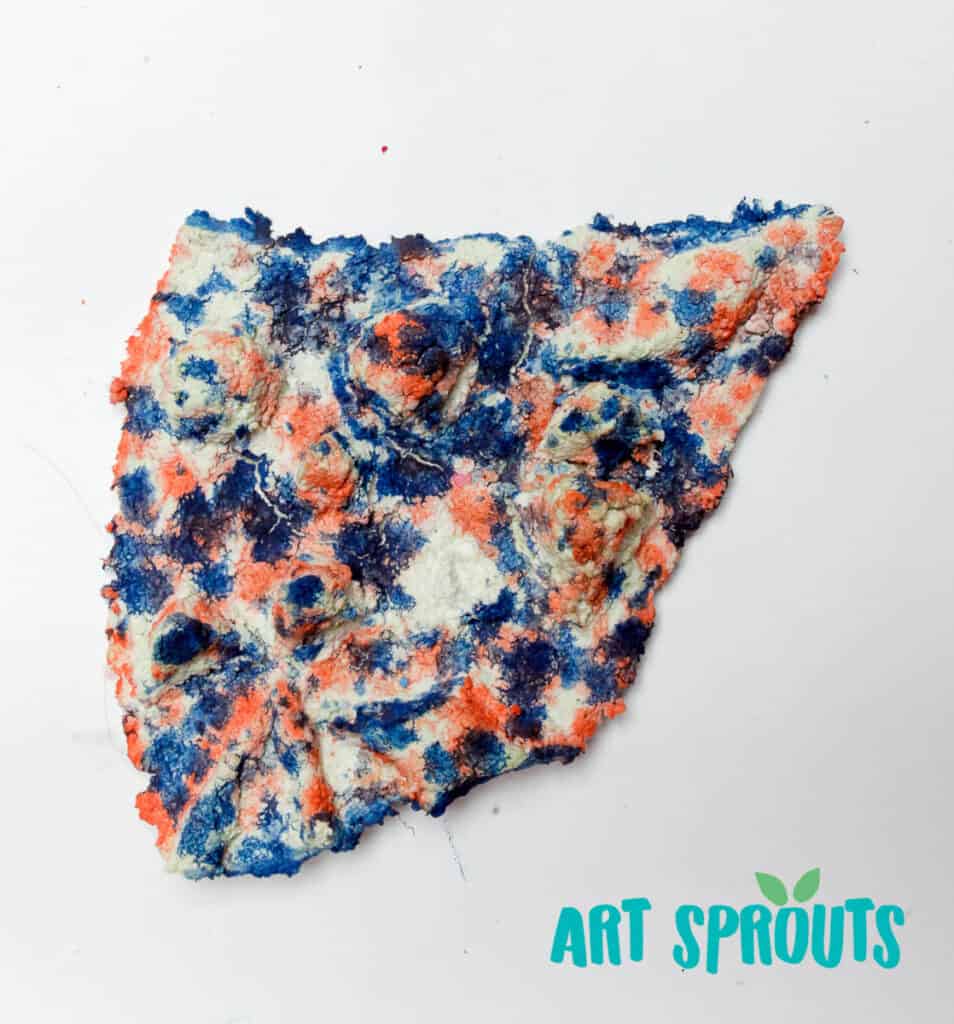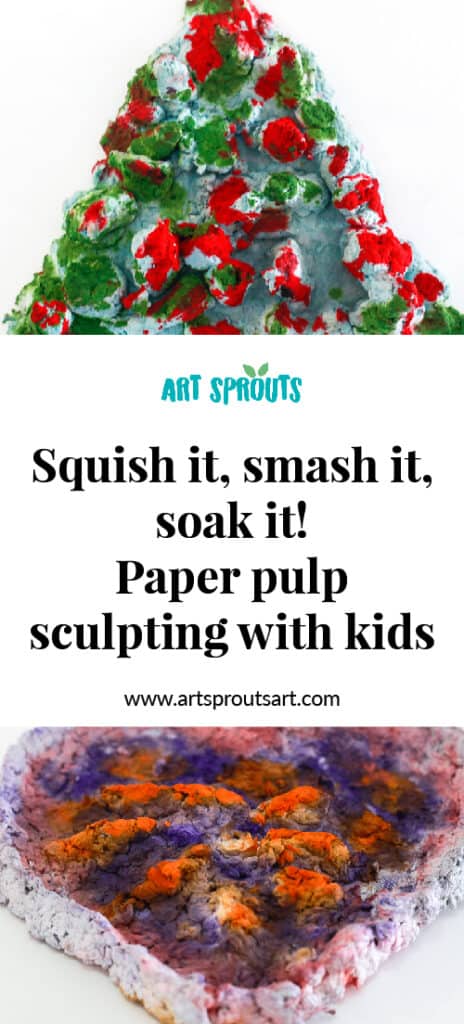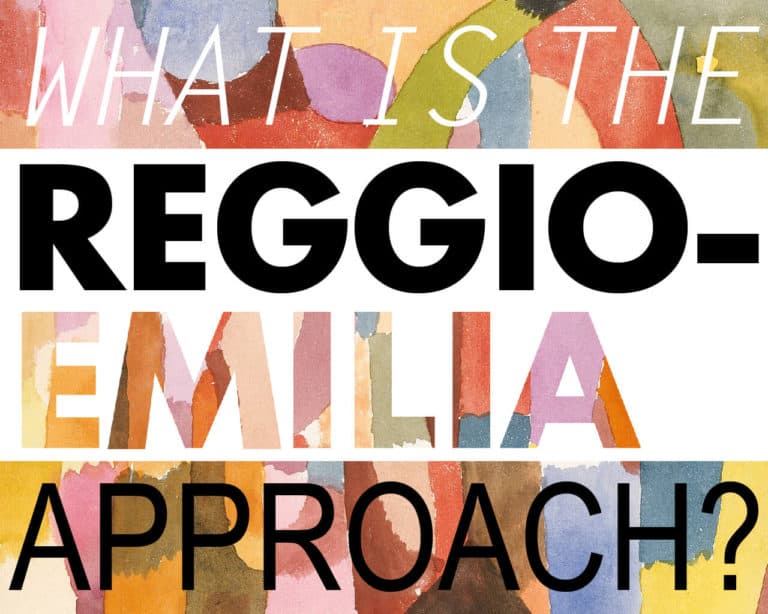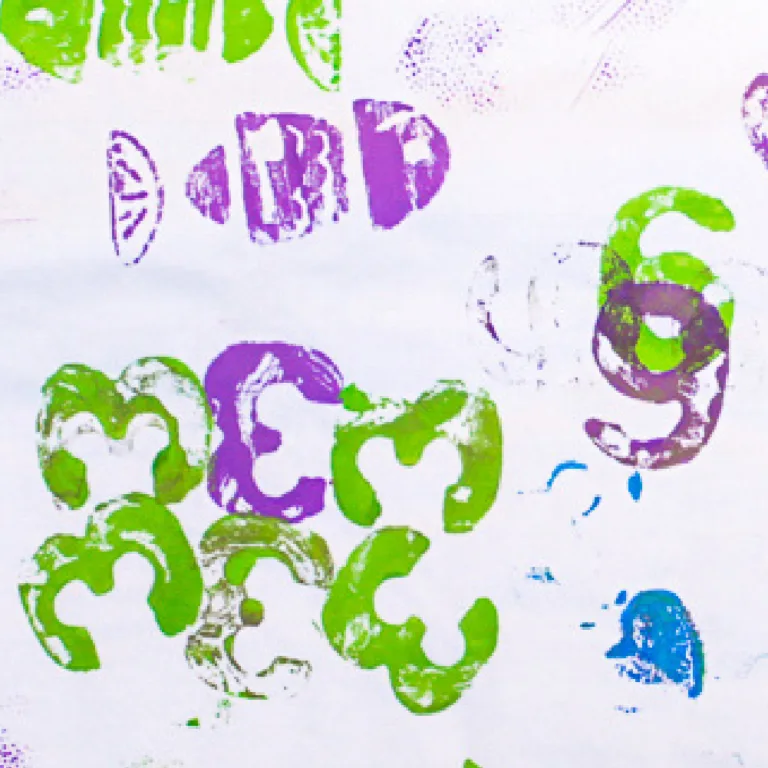Squish it, smash it, soak it! Paper pulp sculpting with kids
Paper pulp sculpting is a favorite activity in my studio, engaging kids as young as two up to older elementary students. It’s a straightforward craft that doesn’t break the bank, requiring only everyday household items like toilet paper, Elmer glue, and gouache paints.
For the little ones, this activity is a sensory playground. They get to feel the wet squish of soaked paper and the stickiness of glue, all while developing crucial fine motor skills as they tear, mash, and shape their creations. As for the older kids, paper pulp sculpting presents a canvas for complexity and precision, allowing them to channel their creativity into more intricate designs.
Here’s how to create whimsical paper pulp sculptures with just a few everyday household items.

Paper pulp sculpting with kids
Materials Needed:
- Toilet paper
- Medium-size containers (take-away plastic containers are perfect!)
- Water
- Elmer glue
- Gouache paints
- Paintbrushes
- Plastic sheets or any other non-stick surface
Instructions:
- Preparation: Begin by filling your containers with two to three inches of water, adding a gulp of Elmer glue. Be mindful of the amount, especially if little ones are prone to spills!
- Engaging Texture Exploration: Tear the toilet paper into small pieces and soak them in the glue-water mixture. Encourage the children to smash the paper with their fingers. This is where the sensory fun begins! Ask prompting questions to engage them further:
- “How does the paper feel in your hands? Is it soft, squishy, or something else?”
- “What happens when you press it down? Does it remind you of anything?”
- “Can you squeeze it? What does it feel like?”

- Creating the Pulp: Continue smashing until the paper is almost dissolved. This process is crucial, so ensure the kids are thorough.
- Sculpting Time: After the paper is adequately mushed, have the children squeeze out as much water as possible. Then, they can place the pulp on a plastic sheet or any non-stick surface suitable for messes. It’s now time to shape the pulp into whatever their hearts desire!
- Coloring the Creations: Once they’ve shaped their sculptures, introduce them to color. Limiting the choice to two or three colors can help them focus on color combinations. With an almost dry brush, have them tap on the wet sculpture. This is another sensory-rich experience and an excellent learning opportunity:
- “Notice how the gouache behaves on the wet pulp. What do you see?”
- “What happens when you add a little more water to your brush?”
- “Why do you think the color spreads out like that?”
- Drying Time: The most challenging part for eager little artists—waiting! Set the sculptures aside to let them completely dry before attempting to remove them from the plastic base.

Clean-Up Routine:
As the sculpting fun winds down, it’s essential to instill good clean-up habits in the children. Here’s a simple routine to follow:
- Brush and Container Cleaning: Once the children complete their masterpieces, guide them in taking their brushes and containers to the sink. Show them how to rinse the brushes thoroughly and how to clean the containers. This not only teaches responsibility but also respect for their tools and materials.
- Tidy-Up Time: Provide cloths for wiping up any spills on tables and floors. Encouraging children to clean up their own messes fosters independence and care for their environment!

Additional tips:
- Story Time: Enhance the crafting experience by weaving in stories or themes. If you’re reading a book about animals, for example, inspire the children to create their favorite animal from the tale. This connection between storytelling and art can deepen their understanding and enjoyment of both.
- Embrace the Mess: Accept that this activity can be messy, and prepare your space with newspapers or a drop cloth. Keep wipes or a damp cloth within reach for those inevitable spills. Remember, mess is often a sign of deep engagement and learning!
- Sensory Play: While older children may concentrate on crafting intricate sculptures, younger children, including toddlers, might find joy in the simple actions of tearing and mashing the paper. Watch and interact with them to discern which part of the process captivates them the most. Don’t rush to complete the project; every step is a valuable opportunity for learning and growth. Each child engages differently, and this craft allows them to explore at their own pace and preference.
Did you try this activity? Let me know your thoughts in the comment section below!
Save for later:








